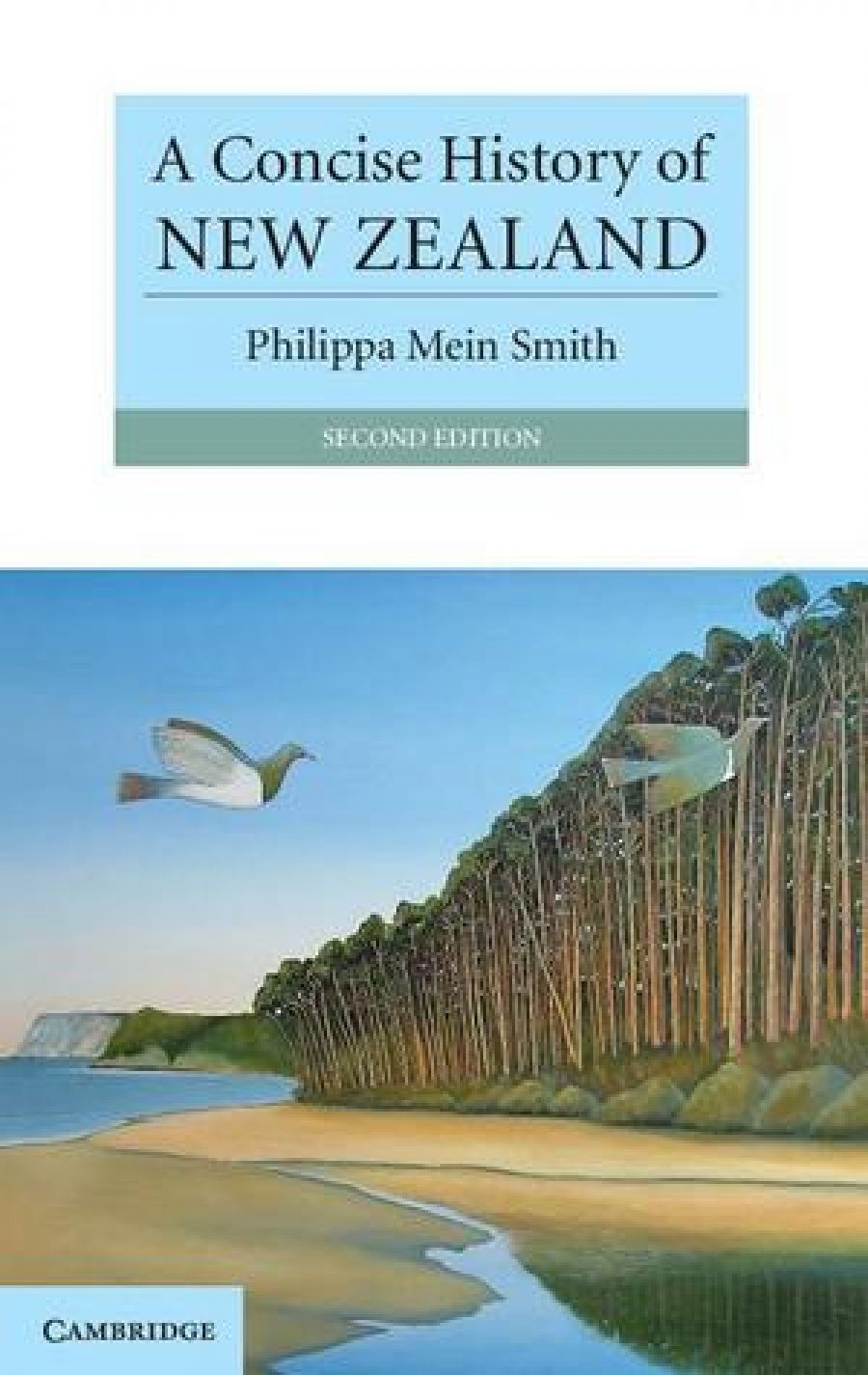
- Free Article: No
- Contents Category: New Zealand
- Review Article: Yes
- Online Only: No
- Custom Highlight Text:
New Zealand coins often sneak into Australian purses. Both currencies bear the queen’s, and some coins have common colonial symbols on the front (Cook’s Endeavour on the Kiwi fifty cent, for example), but these coins only work by stealth. They have value if they can pass as Australian. Recognised for what they are – foreign objects – their currency evaporates ...
- Book 1 Title: A Concise History of New Zealand
- Book 1 Biblio: Smith Cambridge University Press, $39.95 pb, 320 pp, 9781107402171
Sometimes a knowledge of New Zealand history can feel like a pocketful of New Zealand coins: a pretty annoying jingle with little value here at all. But this well-revised second edition of Philippa Mein Smith’s 2005 original is a reminder of how much Australia and New Zealand had in common in the colonial past and how intertwined we are in the present. In the late nineteenth century, a gold and wool-rich New Zealand decided not to join a federal Australasia, but in a recession-ridden 2010 a quarter of New Zealanders surveyed in a poll wanted to reconsider becoming a seventh state. So many Pakeha and Maori now live in Australia (one in six Maori have crossed the ditch) that some sort of debate about the history of this population movement and its implications for both countries seems justified.
Certainly, there needs to be more acknowledgment of the significant place Maori once enjoyed in Australia, often at the expense of Aboriginal peoples. The first documented Maori to visit Australia were Ngahuruhuruand Tuki Tahua, a warrior and a priest, who were taken to Norfolk Island to teach convicts how to turn flax into rope. This was a bit of a waste of time, since the two men had no idea what to do. Dressing flax was a job for women.
By 1840 more than one thousand northern Maori had visited Sydney to trade, learn, and holiday. Some of them adopted the British colonisers’ contemptuous attitude towards Aborigines, although chiefs such as Te Pahi were also critical of the cruelty and lack of sophistication that he observed in Europeans. Maori ships sailed into Sydney harbour under the New Zealand (Maori) shipping flag.
Maori were the only non-white people to be admitted freely to Australia in the nineteenth century, and they were also exempt from the White Australia policy. Australians also journeyed to New Zealand. Australia provided most of the soldiers to end Maori resistance in the North in the 1840s, and in the devastating wars in Waikato and Taranaki in the 1860s, three thousand military settlers and volunteers came from the Australian colonies.
Mein Smith’s history opens with the deep geological past, when ‘future New Zealand’ clung like a slug to the borders of what would become Australia and Antarctica. She sketches Maori arrival, from Hawaiki, in about 1300 and subsequent Dutch, French, and European explorations, then introduces a section titled ‘Australian Links’. Here, Mein Smith outlines the Maori discovery of Australia and gestures towards some shared colonial figures, including men such as Samuel Marsden, known as the flogging parson for his cruelty to convicts in New South Wales and as the humane missionary in New Zealand’s north, and Richard Seddon (King Dick), who left Victoria for New Zealand to hunt for gold and became premier. In 1901 Seddon attended Federation festivities in Sydney, accompanied by a group of Maori warriors.
The remaining nine chapters are themed overviews of the periods between 1840 (the year New Zealand’s founding document, the Treaty of Waitangi, was signed) and 2011, when an earthquake killed two hundred people in Christchurch and destroyed 10,000 homes.
Mein Smith is a talented, efficient, and creative surveyor, qualities that are fitting in a descendant of William Mein Smith, the New Zealand Company’s surveyor-general.
Unlike Keith Sinclair, Michael King, or James Belich – authors of previous general histories of New Zealand – Mein Smith has written about the Tasman world and, earlier, on the work of baby expert, eugenicist, and mental asylum superintendent Truby King. This background allows her to give weight to every sort of domestic politics, from anti-nuclear protests to how women feed babies. Women got the vote in 1893 in New Zealand, but Mein Smith skirts over the lives of leading suffragettes such as Kate Sheppard, a woman she describes as ‘religious, tactful and beautiful, with a questionable private life’. I would have enjoyed reading more about the tantalising Sheppard and other outstanding contemporary feminists, such as economist Marilyn Waring, and significantly less on Gallipoli and the Anzacs.
Mein Smith gestures to competing Maori understandings of events such as the signing of the Treaty. She reminds readers, too, how the brutal deregulation and privatisation enacted by National governments in the 1980s was particularly terrible for Maori communities, but readers who want a more thorough discussion of Maori understandings of post-contact history might consult Ranginui Walker’s Ka Whawhai Tonu Matou: Struggle Without End (revised, 2004).
The excellent final chapter, ‘Shaky Ground 2000–2011’, covers topics as diverse as trade links with China, Australian ownership of New Zealand banks, and the notorious ‘anti-smacking’ legislation of 2007.
The Christchurch earthquake was caused when ‘two hitherto unknown faults ruptured into life after, perhaps, 10,000 years of inactivity’, writes Mein Smith, a Professor of History at Canterbury University, Christchurch. The university closed and Mein Smith had to work from home ‘while teaching online supplemented by meetings with students in a tent’. In this atmosphere of destruction and despair, Mein Smith deserves special credit for being able to find some solid ground from which to revise this excellent concise history.


Comments powered by CComment